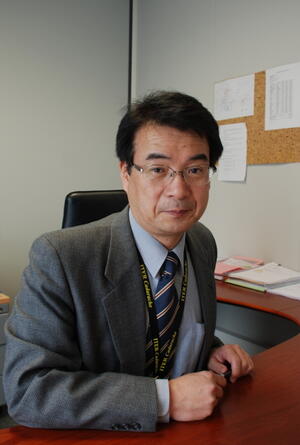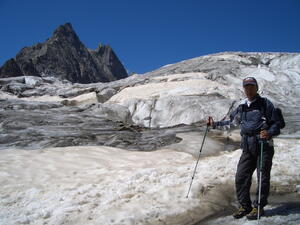In ITER's "control tower"
Years from now, when fusion energy is part of our daily life, we'll look at this picture with amazement. So this was the original "ITER Team" in France—only seven people? Of course when the picture was taken in February 2006, hundreds had been working around the world toward ITER. But these were the "Original Seven," the first occupants of Building 519, the pioneers of the Joint Work Site in Cadarache.
Eisuke Tada, head of the Project Office, was among them, both as a pioneer and a veteran. What he felt then—"the complexity of the task ahead and the dream"—he still feels "every morning."
Twenty years earlier, at the very beginning of the ITER Project, he had been part of Conceptual Design Activities (CDA) in Garching, Germany, "a time when it was difficult to believe we would actually build ITER. It was such a political and technological challenge!"
From CDA, Eisuke went on to Engineering Design Activities (EDA) and, from there, to the "tough process" of site selection, first between three Japanese proposals, Naka, Tomakomai and Rokkasho, and finally, as an "assessment member" between the four international sites. In the last stages of the process, some of the current ITER Organization members such as Manfred Glugla and Akko Maas were his counterparts on the European side, and if "discussions were always fair and professional," Eisuke admits "they were sometimes hot..."
As a young mechanical engineer eager to "build things," he entered the world of fusion in 1978 fresh out of University. JAERI, the Japanese Atomic Energy Research Institute (now JAEA, Japanese Atomic Energy Agency) was building one of the six toroidal field coils of the "Large Coil Task" (LCT), a joint Euratom, US, Japanese and Swiss collaborative venture and an important milestone in the international fusion program. The LCT aimed at proving the design principles and fabrication techniques to be applied for the construction of a superconducting tokamak.
As head of the Project Office, which he likens to the "control tower" of the ITER Project, Eisuke's responsibility is "to provide systems and tools for project management, technical integration and engineering." It is still, in a way, a mechanical engineer's job.



